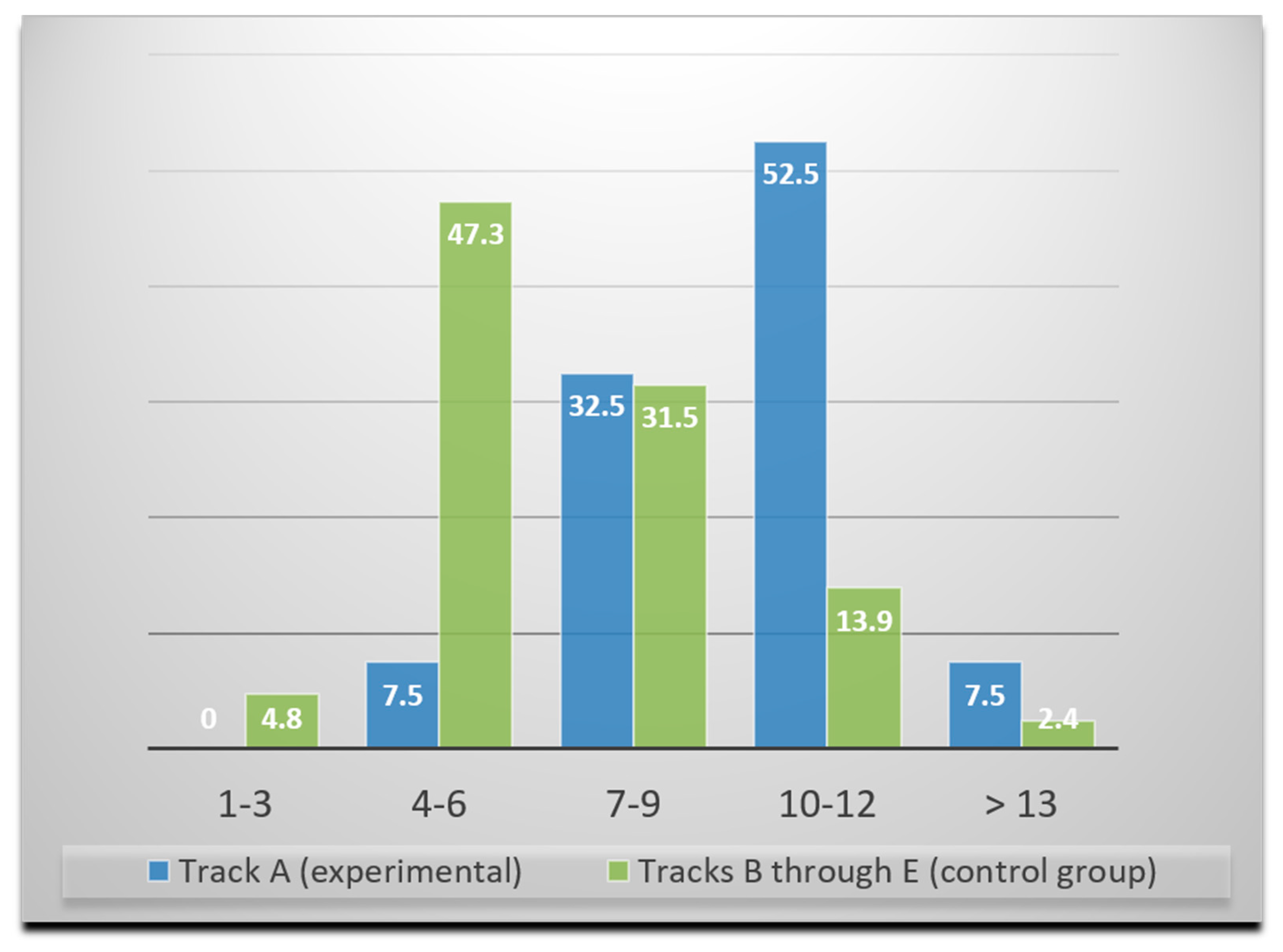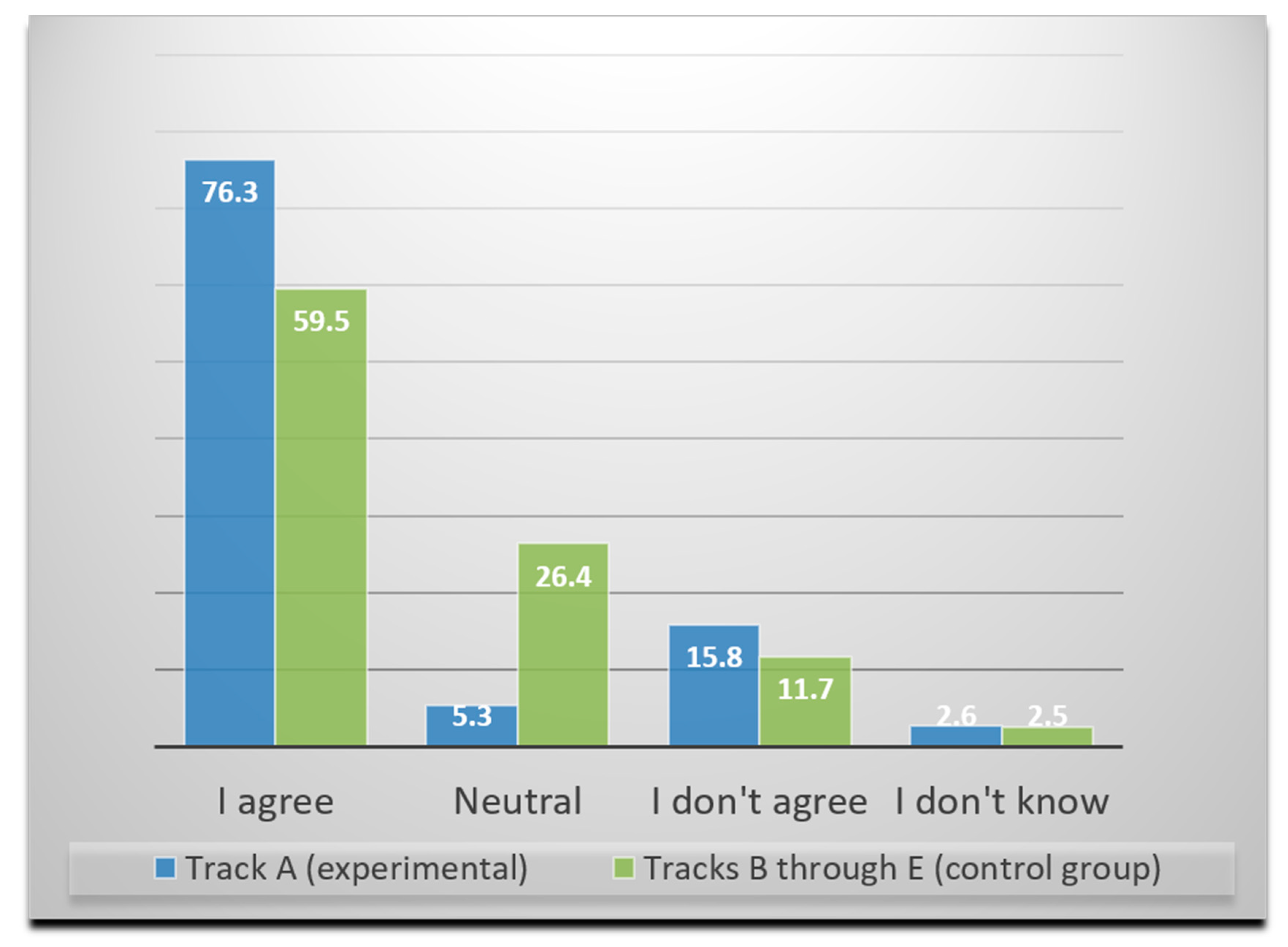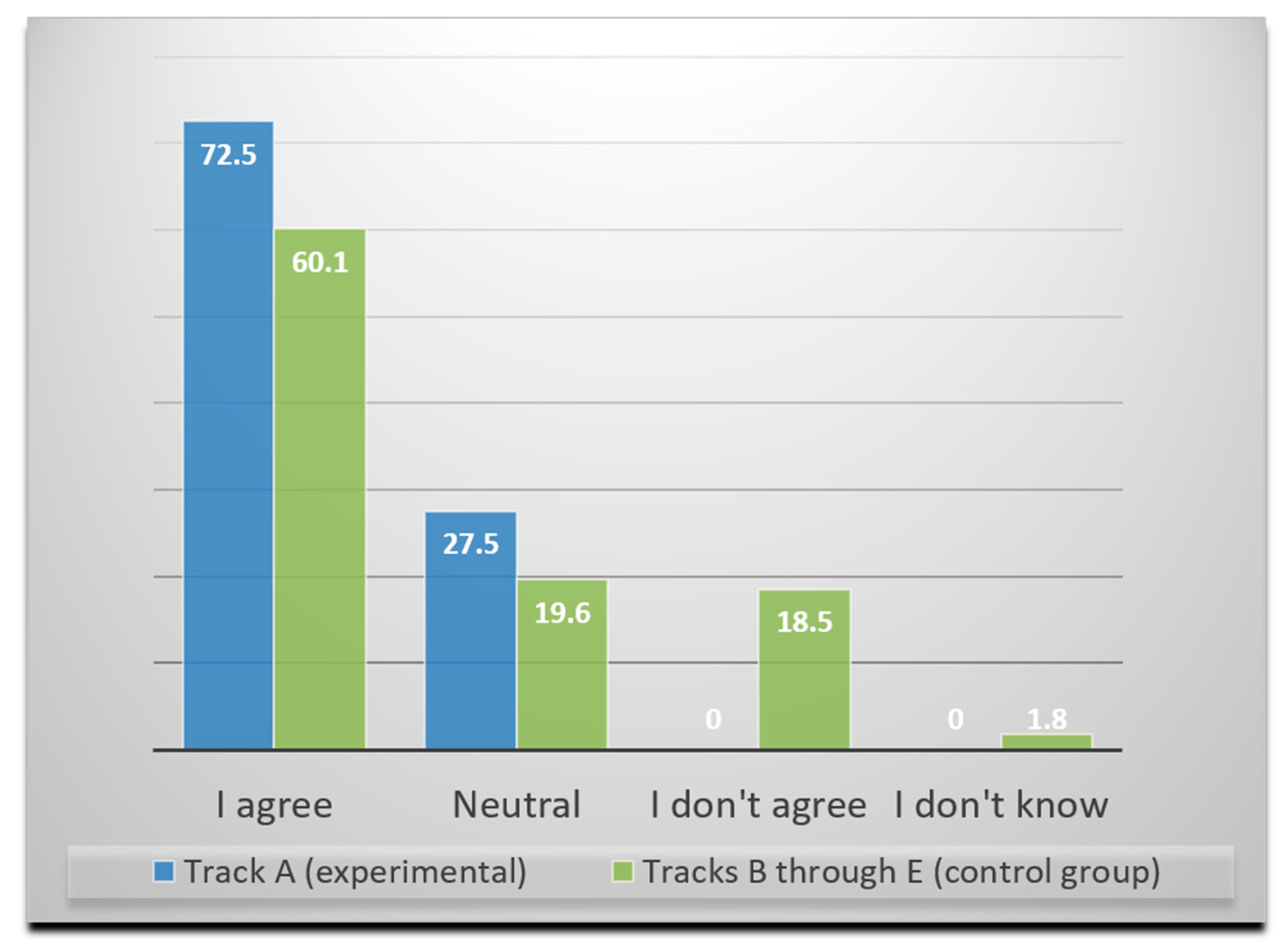Problem-Oriented Project Learning as a First Year Experience: A Transformative Pedagogy for Entry Level PPL
Abstract
1. Introduction
1.1. Problem-Oriented Project Learning as a Form Of, and Deviation From, PBL
1.2. PPL as a First Year Experience
2. Theoretical Framework
2.1. Entry-Level PPL in Light of First Year Experience Research
2.2. Entry Level PPL As a Transformative Process
2.3. The Communicative Aspect of PPL: Intersubjectivity in Deliberative Education
2.4. Individual Accountability in Cooperative Learning
2.5. Replacing the Laissez-Faire Supervisor with the Proactive Interlocutor
2.6. Elements of an Entry-Level Pedagogy for PPL, in Short
- It needs to promote gradual habitual change, raising students’ awareness of their past and present habitual habits. This process needs to be communicative;
- It needs to support intersubjectivity and deliberation in groups—actively sustaining and promoting deliberative spaces, while at the same time acknowledging that there needs to be awareness of the pitfalls of communication. Students should actively train discourse (in Habermas’ sense of the word—that is, questioning validity claims that are otherwise naively presupposed in communication);
- It needs to raise awareness in both students and faculty staff that the dynamics of learning in a group presupposes that individual members are held accountable for the common process and are recognized for their achievements;
- It needs to reconceptualize the principle of participant-direction, so that the proactive interlocutor role is integrated. Methods of heuristics are central to this role.
3. Materials and Methods
3.1. The HumBach First-Year Strategy
3.2. Introducing Scaffolding Structures for PPL: A Comparative Case Study
4. Results
5. Discussion
Supplementary Materials
Funding
Acknowledgments
Conflicts of Interest
References
- Andersen, A.S.; Kjeldsen, T.H. Theoretical Foundations of PPL at Roskilde University. In The Roskilde Model: Problem-Oriented Learning and Project Work; Andersen, A.S., Heilesen, S., Eds.; Springer: Heidelberg, Germany; New York, NY, USA; Dordrecht, The Netherlands; London, UK, 2015. [Google Scholar]
- Servant, V.C.F. In Revolutions and Re-iterations: An Intellectual History of Problembased Learning. Ph.D. Thesis, Erasmus University, Rotterdam, The Netherlands, 2016. [Google Scholar]
- ServantMiklos, V.F.C.; Norman, G.R.; Schmidt, H.G. A Short Intellectual History of Problembased Learning. In The Wiley Handbook of Problembased Learning, 1st ed.; Moallem, M., Hung, W., Dabbagh, N., Eds.; John Wiley & Sons Inc.: Hoboken, NJ, USA, 2019. [Google Scholar]
- Savery, J.R. Overview of Problem-based Learning: Definitions and Distinctions. Interdiscip. J. Problembased Learn. 2006, 1, 9–20. [Google Scholar] [CrossRef]
- Whitehead, J.S. Denmark’s Two University Centers: The Quest for Stability, Autonomy, and Distinctiveness. High. Educ. 1981, 10, 89–101. [Google Scholar] [CrossRef]
- de Graaff, E.; Kolmos, A. History of problembased and project-based learning. In Management of Change: Implementation of Problembased and Project-Based Learning in Engineering; de Graaff, E., Kolmos, A., Eds.; Sense: Rotterdam, The Netherlands, 2007. [Google Scholar]
- Hanney, R.; Savin-Baden, M. The problem of projects: Understanding the theoretical underpinnings of project-led PBL. Lond. Rev. Educ. 2013, 11, 7–19. [Google Scholar] [CrossRef]
- Dewey, J. Experience and Education; Originally published 1938; Collier Books, Collier Macmillan Publishers: New York, NY, USA; London, UK, 1963. [Google Scholar]
- Dewey, J. Democracy and Education: An Introduction to the Philosophy of Education; Macmillan: New York, NY, USA, 1916. [Google Scholar]
- Negt, O. Soziologische Phantasie und Exemplarishes Lernen: Zur Theorie und Praxis der Arbeiterbildung; Europäische Verslagsanstalt: Frankfurt, Germany, 1971. [Google Scholar]
- Andersen, A.S.; Heilesen, S. The Roskilde Model: Problem–Oriented Learning and Project Work; Springer: Heidelberg, Germany; New York, NY, USA; Dordrecht, The Netherlands; London, UK, 2015. [Google Scholar]
- Andersen, A.S.; Kjeldsen, T.H. A Critical Review of the Key Concepts in PPL. In The Roskilde Model: Problem–Oriented Learning and Project Work; Andersen, A.S., Heilesen, S., Eds.; Springer: Heidelberg, Germany; New York, NY, USA; Dordrecht, The Netherlands; London, UK, 2015. [Google Scholar]
- Blomhøj, M.; Enevoldsen, T.; Haldrup, M.; Nielsen, N.M. The Bachelor Programmes and the Roskilde Model. In The Roskilde Model: Problem–Oriented Learning and Project Work; Andersen, A.S., Heilesen, S., Eds.; Springer: Heidelberg, Germany; New York, NY, USA; Dordrecht, The Netherlands; London, UK, 2015. [Google Scholar]
- Harvey, L.; Drew, S.; Smith, M. The First-Year Experience: A Review of Literature for the Higher Education Academy; Centre for Research and Evaluation, Sheffield Hallam University: Sheffield, UK, 2006. [Google Scholar]
- Koch, A.K.; Gardner, J.N. A History of the First Year Experience in the United States during the Twentieth and Twenty–First Centuries: Past Practices, Current Approches, and Future Directions. Saudi J. High. Educ. 2014, 11, 11–44. [Google Scholar]
- Tinto, V. Dropout from Higher Education: A Theoretical Synthesis of Recent Research. Rev. Educ. Res. 1975, 45, 89–125. [Google Scholar] [CrossRef]
- Tinto, V. Classrooms as Communities: Exploring the Educational Character of Student Persistence. J. High. Educ. 1997, 68, 599–623. [Google Scholar] [CrossRef]
- Mezirow, J. Hvordan kritisk refleksion fører til transformativ læring. In 49 Tekster om Læring; Illeris, K., Ed.; Samfundslitteratur: Frederiksberg, Denmark, 2012. [Google Scholar]
- Kegan, R. What “Form” Transforms? A Constructive–Developmental Approach to Transformative Learning. In Learning as Transformation: Critical Approaches on a Theory in Progress; Mezirow, J., Ed.; Jossey-Bass: San Francisco, CA, USA, 2000. [Google Scholar]
- Habermas, J. Knowledge and Human Interests; Heinemann: London, UK, 1971. [Google Scholar]
- Illeris, K. Transformativ Læring og Identitet; Samfundslitteratur: Frederiksberg, Denmark, 2013. [Google Scholar]
- Dreon, R. Dewey on Language: Elements for a Non-Dualistic Approach. Eur. J. Pragmatism Am. Philos. 2014, 6, 1–17. [Google Scholar] [CrossRef]
- Black, M. Dewey’s Philosophy of Language. J. Philos. 1962, 59, 505–523. [Google Scholar] [CrossRef]
- Antonio, R.J.; Kellner, D. Communication, Modernity, and Democracy in Habermas and Dewey. Symb. Interact. 1992, 15, 277–297. [Google Scholar] [CrossRef]
- Habermas, J. The Theory of Communicative Action. In Vol. I: Reason and the Rationalization of Society; Beacon: Boston, MA, USA, 1987. [Google Scholar]
- Johnson, D.W.; Johnson, R.T. Making Cooperative Learning Work. Theory Pract. 1999, 38, 67–73. [Google Scholar] [CrossRef]
- Slavin, R.E. Co-operative Learning: What Makes Group Work? In The Nature of Learning: Using Research to Inspire Practice; Dumont, H., Istance, D., Benavides, F., Eds.; OECD: Paris, France, 2010. [Google Scholar]
- Harden, R.M.; Crosby, J. The Good Teacher is More than a Lecturer: The Twelve Roles of the Teacher. Med. Teach. 2000, 22, 334–347. [Google Scholar]
- Dahms, M.L.; Spliid, C.M.; Nielsen, J.F.D. Teacher in a problem-based learning environment: Jack of all trades? Eur. J. Eng. Educ. 2017, 42, 1196–1219. [Google Scholar] [CrossRef]
- Larsen, M. Almendannelse er også et projekt: Bidrag til den faglige udvikling af humaniora på RUC. In De Fire Dimensioner-essays Om Forskning, Uddannelse og Formidling; Larsen, M., Ed.; Institut for Kultur og Identitet: Roskilde, Denmark, 2012. [Google Scholar]
- Feldt, J.E.; Petersen, E.B. Inquiry-based Learning in the Humanities: How to Move from Topics to Problems Using the “Humanities Imagination”. In preparation.




© 2019 by the author. Licensee MDPI, Basel, Switzerland. This article is an open access article distributed under the terms and conditions of the Creative Commons Attribution (CC BY) license (http://creativecommons.org/licenses/by/4.0/).
Share and Cite
Nielsen, N.M. Problem-Oriented Project Learning as a First Year Experience: A Transformative Pedagogy for Entry Level PPL. Educ. Sci. 2020, 10, 6. https://doi.org/10.3390/educsci10010006
Nielsen NM. Problem-Oriented Project Learning as a First Year Experience: A Transformative Pedagogy for Entry Level PPL. Education Sciences. 2020; 10(1):6. https://doi.org/10.3390/educsci10010006
Chicago/Turabian StyleNielsen, Niels Møller. 2020. "Problem-Oriented Project Learning as a First Year Experience: A Transformative Pedagogy for Entry Level PPL" Education Sciences 10, no. 1: 6. https://doi.org/10.3390/educsci10010006
APA StyleNielsen, N. M. (2020). Problem-Oriented Project Learning as a First Year Experience: A Transformative Pedagogy for Entry Level PPL. Education Sciences, 10(1), 6. https://doi.org/10.3390/educsci10010006




